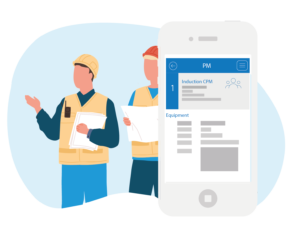4 benefits of automating real estate vendor payments
This blog was written by Charles Hartley, Senior Content Writer at AvidXchange.
AvidXchange helps real estate companies liberate their accounts payable from the endless paper chase of manual checks. MRI Vendor Pay powered by AvidXchange is a complete out-of-the-box integration used by more than 500+ clients. Learn more about the AvidXchange integration here.
After an unprecedented period of economic disruption, finance professionals in the real estate market are now facing a whole new set of industry dynamics. The broad digitization and automation of their financial transactions and overall operations are at the heart of these new dynamics.
What does this mean? It means real estate finance pros are changing business processes by digitizing and automating invoices, payments, supply chain and marketing – and everything in between.
These sweeping changes contrast with the way businesses used to operate only two years ago. Then, finance pros may have made vendor payments using paper invoices and paper checks. Now, chances are they have started – or are seriously considering – automating those accounts payable (AP) payments.
Real estate finance pros are using automation
There’s more. Instead of paying vendors from many different real estate offices as they typically have, finance pros can use AP automation software to consolidate payments in one centralized dashboard system that’s easy to access and use.
A June 2021 survey of chief financial officers (CFOs) from PYMNTS.com and VersaPay further points to planned shifts to AP automation. According to this survey, 96 percent of CFOs surveyed have either digitized or plan to digitize their AP and AR accounting functions in the next year.
With so much momentum shifting to AP automation, it’s important to ask why. What are the benefits of digitizing and automating your vendor payment process? We’ve identified four of the most important benefits making AP automation so crucial now.
1. Increase efficiencies
When your business digitizes and automates its AP vendor payments, it’s creating more efficiencies than using manual processes full of paperwork. But efficiency is not just a vague word to use to describe what AP automation is all about. Among finance pros, efficiency is actually one of the most highly valued benefits.
An AvidXchange survey of our customers finds that 95 percent rated the AP automation solution’s ability to drive efficiency as either important or extremely important. When we asked for their top reasons for considering an AP automation solution in the first place, the top three results all centered on driving efficiency.
- 83% to create operational efficiency
- 72% to reduce processing operational costs
- 64% to improve timing of approval process
2. Faster payments using AP automation
In the context of AP automation, efficiency often translates to faster processing of vendor invoices and payments. And these faster payments are crucial to vendors and suppliers. They want to get paid quickly. Your business could pull in higher or lower revenues based on how fast you pay these key business partners. But how fast is AP automation compared with manual AP? No matter how your measure this, it’s a big improvement.
Efficiencies include faster vendor payments
Finance pros want to make vendor payments faster with fewer mistakes and interruptions while minimizing costs. Saving time and money executing financial transactions, such as processing invoices and payments automatically, translates to better efficiencies. When you cut steps in the invoice approval process, enabling AP managers to view the status of invoices faster and more easily, you attain better efficiencies.
AP automation: 70-80% time savings
According to Goldman Sachs, AP automation can drive 70-80% time-savings for small and medium-size businesses (SMBs). But how does an automated solution cut so much time out of the invoice and payment cycle, and what does that actually mean for the business? Let’s look at two examples: eliminating invoice chasing and expediting approvals and payments.
- AP automation expedites approvals and payments. If your AP process uses manual, paper-filled processes, you know how challenging it can be to work through several levels of approvals to process one invoice and payment. Multiply that by hundreds or thousands of invoices needing approvals each month, and you realize the problem becomes exponentially more serious. With an industry average of more than a week to process a single invoice, it’s obvious many companies would like to speed up this process.
- Automation minimizes the need to chase down approvers. Taking advantage of software rules and restrictions, AP automation eliminates the hassle of chasing down an approver and manually routing invoices to the next step in the process. With just a few clicks, actual payments can be approved and executed. Approvers get approval invoice reminders in their message inboxes. As a result, your finance team spends a lot less time on approvals and becomes liberated to focus on more valuable strategic work.
3. Cost savings of AP automation
Not only does AP automation save time, it directly saves real estate businesses money. Goldman Sachs estimates total costs (processing and labor costs) for AP staff involved in manually processing a single invoice equaled $16.00 for medium-size businesses and $22.26 for small businesses.
In an automated system, by contrast, these numbers fell to $5.89 and $6.89, respectively. That’s a net savings of roughly 60-to-70 percent. Why the cost savings? Let’s go deeper into the numbers for better understanding.
Top performers spend less time processing invoices
In its research of 1,485 organizations, the American Productivity & Quality Center found “top performers” – the leading 25 percent of businesses evaluated – spent an average of $2.07 per invoice. The lowest 25 percent spent nearly five times as much ($10.00). The key difference between the two groups? Automation: top performers typically use it while lower performers don’t.
4. Better visibility into status of vendor payments
Finance pros tell us consistently about their desire to have faster and easier visibility into the status of their vendor payments. AP automation delivers this crucial benefit. Wherever they are, using whatever electronic device they prefer, they can see the status of their vendor payments and invoices.
That’s a big improvement compared with sorting through piles of disorganized paper invoices and vendor payments trying to figure out which one has been paid and when. When you use AP automation, you’re less likely to make mistakes and send incorrect payments. And your payments are more likely to arrive on time.
Final thoughts
All these benefits of AP automation underscore the point that this technology is not merely a “nice to have” tool. It’s a “must have” business asset. The technology enables your business to pay vendors and suppliers on time even with a hybrid workforce structure.
It also makes it possible for your business to use fewer manual processes, which are prone to more mistakes than automated systems. And consider this: If your competitors can pay vendors faster than you with fewer mistakes, they’re more likely to win more business – and may even take away some of your customers. And that’s reason enough to invest in AP automation software.
Big change in next year: use of technologies
These investments will require your business to change. Over the next year in real estate, the biggest change you’ll see will be an increase in the number and types of technologies used to improve productivity and efficiency while minimizing operational costs. These technologies will include software for AP, customer relationship management and accounting.
Equipped with these tools, you’ll accelerate towards becoming an all-digital, completely automated business. Your finance team will benefit and the skills you and your team need will evolve and expand. And, importantly, your business will be better positioned for growth.
Read More: How Digital Can Help Drive AP Software Market Growth.
Affordable Housing Asset Manager Insights: Maximize Portfolio Performance by Supporting Housing Operators
From rising operational costs to increased demand for flexibility and technology, asset managers are navigating unique challenges to support property management teams while ensuring portfolio health and resilience. Recent MRI research delves into the…

